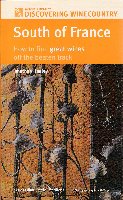
BANDOL and Cassis are picturesque ports between Toulon and Marseille. Pleasure-seekers’ yachts fill their harbours and cheerful, pastel-coloured restaurants and cafés line their seafronts. Bandol is the undisputed capital of superior Provençal reds while Cassis is famous for its distinctive white wine.
Bandol’s vineyards cover an amphitheatre of slopes behind the town while the tallest cliff in France, Cap Canaille, looms over those of Cassis. The Bandol wine route takes in the dramatic Gorges d’Ollioules and three extraordinary villages perchés, Le Castellet, Evanos and La Cadière-d’Azur. The route around Cassis takes in amazing terraced vineyards where God is said to have shed a tear and given birth to the local wine. If true, God has straw-coloured tears with an herbal bouquet and salty tang. The Cassis coastline is best known for its vertiginous calanques, or mini-fjords.
Quite why Bandol developed a reputation for sturdy reds while Cassis busied itself with perfecting whites is something of a mystery. Perhaps the appetite for white wines in Cassis developed to complement a cuisine based around the local fishermen’s catch, including poached sea anemones, a local speciality from the calanques. Perhaps the tradition for reds in Bandol developed as Bandol was historically the more important trading port and reds simply travelled better than whites. There are accounts in the 18th and 19th centuries of Bandol reds going as far as America and India and improving with the sea voyage. And when Louis XV was famously asked the secret of his eternal youth, he replied “the wines of Bandol”. The winemaking traditions of both towns were recognised early by the wine authorities. In fact, Cassis was the first appellation in Provence (1936) while Bandol earned its AOC just five years later.
Bandol reds are generally vins de garde, spending 18 months in oak and often requiring a decade before expressing themselves fully. They are drinkable, if somewhat aggressive, up to four years old and can pass through a ‘dumb phase’ for a couple of years before becoming more mellow, complex and interesting. They are based on the thick-skinned, small-berried and notoriously finicky Mourvèdre (known as ‘the dog strangler’ in Australia for its tannins). Bandol rosés also emphasise Mourvèdre, although from younger vines. They’re intended to accompany food, unlike the thirst-quenching rosés of the Côtes de Provence. The appellation also allows Grenache, Cinsault and Syrah but the best reds are nearly pure Mourvèdre, with rich, firm, peppery, red and black berry flavours and a dark purple robe.
Cassis whites are straw-coloured, with floral and herbal aromas and a faintly salty tang due to the vines’ proximity to the sea. They are stronger and spicier than other Provençal whites and are based on Marsanne, Clairette and Ugni Blanc with some Sauvignon and Bourboulenc. They are at their best with food rather than as an aperitif and should be drunk young. Some say they are an acquired taste, even over-priced, but they certainly have character. Curiously, Syrah is excluded from the permitted grape varieties for Cassis reds, which are capable of aging but not like a Bandol.
First published in Discovering Wine Country: South of France (2005). Photograph of Cassis by Jonathan Healey.
















